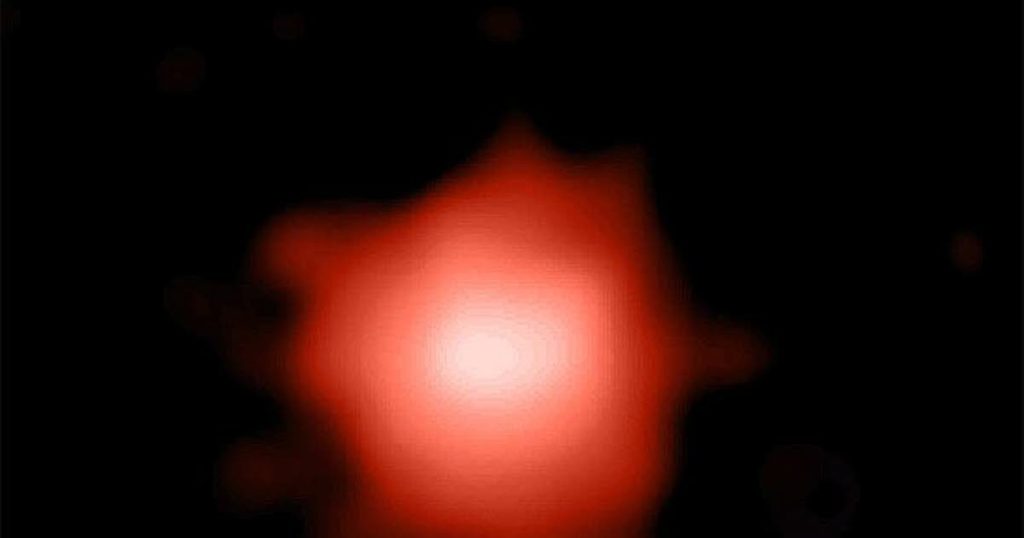
space. Has the James Webb Telescope found the most distant galaxy ever observed?
It will be older than Earth. The James Webb Telescope, which recently revealed its first images, may have discovered the most distant galaxy ever observed. The latter has been around for more than 13 billion years, compared to 4.5 billion for our blue planet.
The light was emitted from so-called GLASS-z13 13.5 billion years ago. This galaxy appears to us only about 300 million years after the Big Bang, 100 million years shorter than the previous record, Rohan Naidoo, of the Harvard Astrophysics Center. He is the lead author of the study of data decomposition from James Webb’s early observations, which is currently underway.
The study has not yet been peer-reviewed, but has been published as a “preliminary version” in order to be quickly available to the expert community. Rohan Naidu said it has been submitted to a scientific journal for publication soon.
To see far is to go back in time
One of the main tasks of the James Webb Telescope is to observe the first galaxies that formed after the Big Bang, which occurred 13.8 billion years ago.
In astronomy, seeing far is like going back in time. Sunlight, for example, takes eight minutes to reach us, so we see it as it was eight minutes ago. By looking as far as possible, we can thus perceive things as they were billions of years ago.
“Records in astronomy are already faltered.”
Many astronomers enthusiastically commented on this discovery on social networks.
“Records in astronomy are already faltering,” tweeted Thomas Zurbuchen, NASA associate administrator for science. “Yes, I tend to only praise the peer-reviewed scientific findings. But this is very promising!” added the study.
Another research team also came to the same conclusions, according to Rohan Naidoo, which “give him confidence”.
Already large galaxies shortly after the Big Bang
Observed by James Webb’s NiRcam instrument, the galaxy was detected on a so-called “deep field”, that is, a wider image taken with a long exposure time to detect dim light.
The peculiarity of James Webb is to work only in infrared. The light emitted by the oldest objects and “red” extends all the way, passing at this wavelength invisible to the human eye.
To paint a picture of this galaxy, the data has been “translated” into the visible spectrum: it then appears as a red, somewhat vague, and white circle in its center.
In fact, the 20 or so researchers who took part in the study studied two galaxies, the other called GLASS-z11, which is less distant. They have amazing properties, for the few we already know:
It looks pretty massive, and that’s very soon after the Big Bang. It’s something we don’t really understand
Rohan Naidoo is an astronomer at the Harvard Center for Astrophysics
When exactly were they formed? Impossible to say at the moment. “There is still work to be done,” the researcher said. He and his colleagues requested more observing time with the telescope to perform spectroscopic analyzes — a technique for characterizing a distant object by analyzing captured light. This should confirm their dimension.
The James Webb Telescope was launched into space about six months ago. Worth $10 billion, it was placed 1.5 million kilometers from us. It has enough fuel to run for 20 years. And so astronomers expect to be inundated with new cosmic discoveries for a long time to come.

“Organizer. Social media geek. General communicator. Bacon scholar. Proud pop culture trailblazer.”
